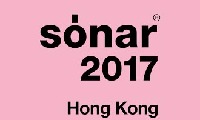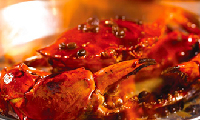|
Buffet: Galaxy Macau Festiva Buffet Macau Tower 360 Cafe Buffet, Portuguese Buffet Travel in Macau:Studio City Golden Reel, Batman Dark Flight, Macau Tower |
||
| Anthem: Celebrating CARICOM | ||
 Dark green: Full CARICOM members.
Lime green: Associate CARICOM members. Pistachio: Observers. |
||
| Seat of Secretariat | ||
| Largest cities | Port-au-Prince | |
|---|---|---|
| Official languages | English, French, Dutch | |
| Type | Supranational organisation | |
| Member states |
15 full members
5 associates
8 observers
|
|
| Leaders | ||
| • | Secretary-General | Irwin LaRocque |
| • | Chairman | Perry Christie |
| Establishment | ||
| • | Treaty of Chaguaramas | 4 July 1973 |
| • | Revised Treaty of Chaguaramas | 2001 |
| Area | ||
| • | Total | 458,480 km2 177,020 sq mi |
| Population | ||
| • | 2010 estimate | 16,743,693 |
| • | Density | 34.8/km2 90/sq mi |
| GDP (PPP) | 2012 estimate | |
| • | Total | $107.82 billion |
| • | Per capita | $6,439 |
| GDP (nominal) | 2010 estimate | |
| • | Total | $64,771 billion (65) |
| • | Per capita | $8,116 (67) |
| HDI (2012) | high |
|
| Website CARICOM.org |
||
Established in 1973, the Caribbean Community (CARICOM) is an organization of 15 Caribbean nations and dependencies. CARICOM's main purposes are to promote economic integration and cooperation among its members, to ensure that the benefits of integration are equitably shared, and to coordinate foreign policy. Its major activities involve coordinating economic policies and development planning; devising and instituting special projects for the less-developed countries within its jurisdiction; operating as a regional single market for many of its members (Caricom Single Market); and handling regional trade disputes. The secretariat headquarters is based in Georgetown, Guyana.
Since the establishment of the Caribbean Community (CARICOM) mainly by the English-speaking parts of the Caribbean region, CARICOM has become multilingual in practice with the addition of Dutch-speaking Suriname on 4 July 1995 and French- (and Haitian Kreyòl-) speaking Haiti on 2 July 2002. Furthermore, it was suggested that Spanish should also become a working language. In July 2012, CARICOM announced that they were considering making French and Dutch official languages.
In 2001, the heads of government signed a Revised Treaty of Chaguaramas thus clearing the way for the transformation of the idea for a Common Market aspect of CARICOM into instead a Caribbean (CARICOM) Single Market and Economy. Part of the revised treaty among member states includes the establishment and implementation of the Caribbean Court of Justice. Since 2013 the CARICOM-bloc along with the Dominican Republic is tied to the European Commission via an Economic Partnership Agreements known as CARIFORUM signed in 2008. The treaty grants all members of the European Union and CARIFORUM equal rights in terms of trade and investment. Within the agreement under Article 234, the European Court of Justice also carries dispute resolution mechanisms between CARIFORUM and the European Union states.
##Membership
Currently CARICOM has 15 full members, 5 associate members and 8 observers. All of the associate members are British overseas territories, and it is currently not established what the role of the associate members will be. The observers are states which engage in at least one of CARICOM's technical committees.
##Organizational structure
Structures comprised by the overall Caribbean Community (CARICOM).
Under Article 4 CARICOM breaks its 15 member states into two groups: Less Developed Countries (LDCs) and More Developed Countries (MDCs).
The countries of CARICOM which are designated as Less Developed Countries (LDCs) are:
- Antigua & Barbuda
- Belize
- Commonwealth of Dominica
- Grenada
- Republic of Haiti
- Montserrat
- Federation of St. Kitts & Nevis
- St. Lucia
- St. Vincent & the Grenadines
The countries of CARICOM which are designated as More Developed Countries (MDCs) are:
- Commonwealth of the Bahamas
- Barbados
- Co-operative Republic of Guyana
- Jamaica
- Republic of Suriname
- Republic of Trinidad & Tobago
Chairmanship
The post of Chairman (Head of CARICOM) is held in rotation by the regional Heads of State (for the republics) and Heads of Government (for the realms) of CARICOM's 15 member states.
Heads of government
CARICOM contains a quasi-Cabinet of the individual Heads of Government. These heads are given specific specialised portfolios of responsibility for overall regional development and integration.
Secretariat
- Secretariat of the Caribbean Community, The term of office of the Secretary-General is 5 years, which may be renewed. (Chief Administrative Organ)
- Secretary-General of the Caribbean Community, the CARICOM Secretary General (Chief Executive) handles Foreign and Community Relations.
- Deputy Secretary-General of the Caribbean Community, handles Human and Social Development.
- General Counsel of the Caribbean Community, handles Trade and Economic Integration.
The goal statement of the CARICOM Secretariat is:
To provide dynamic leadership and service, in partnership with Community institutions and Groups, toward the attainment of a viable, internationally competitive and sustainable Community, with improved quality of life for all.
Organs and bodies
Community Council
The Council consists of Ministers responsible for Community Affairs and any other Minister designated by the Member States in their absolute discretion. It is one of the principal organs (the other being the Conference of the Heads of Government) and is supported by four other organs and three bodies.
Institutions
The 23 designated institutions of CARICOM are as follows:
The Caribbean Court of Justice will act in its "original jurisdiction", as settlement unit for disputes on the functioning of the Caribbean (CARICOM) Single Market and Economy (CSME). Additionally the states of CARICOM voted to supplement original jurisdiction with "appellate jurisdiction" under this the former colonies of the United Kingdom will have effectively replaced the Privy Council in London, United Kingdom with the CCJ.[citation needed]
The CCJ is based in Port of Spain, Trinidad and Tobago. The majority of member states[which?] however, continue to utilize the Privy Council as their final appellate court and three member states do not use the CCJ for either its original jurisdiction or its appellate jurisdiction because they have either not signed the Revised Treaty of Chaguaramas (the Bahamas and Haiti) or are a current British colony (Montserrat).
Associate institutions
The five designated associate institutions of CARICOM are as follows:
##The CARICOM Standard and CARICOM Song
The Standard or Flag of the Caribbean Community was chosen in November 1983 at the Conference of Heads of Government Meeting in Port of Spain, Trinidad. There the Conference approved the design of the CARICOM flag. The original design was done by the firm of WINART Studies in Georgetown, Guyana but this was substantially modified at the Meeting of the Conference of Heads of Government in July 1983. The flag was first flown on 4 July 1984 in Nassau, Bahamas at the fifth Meeting of the Conference of Heads of Government.
The Flag features a blue background - the upper part being of a light blue representing the sky and the lower part of a dark blue representing the Caribbean Sea. The yellow circle in the centre of the Flag represents the sun on which is printed in black, the logo of the Caribbean Community - two interlocking Cs. The two Cs are in the form of broken links in a chain, symbolising both unity and the break with the colonial past. The narrow ring of green around the sun represents the vegetation of the Region.
As part of CARICOM's 40th anniversary celebrations, a competition to compose an official song or anthem for CARICOM was launched in April 2013. The goal of the competition was to facilitate the involvement of CARICOM countries in choosing a regionally and internationally recognized song that promoted unity and inspired CARICOM identity and pride. A regional panel of judges comprising independent experts in music was nominated by Member States and the CARICOM Secretariat to choose the CARICOM Song. The competition was conducted in three rounds, where sixty three entries were condensed to the final three, of which Celebrating CARICOM by Ms. Michele Henderson of Dominica, was chosen as the winner in March 2014. Ms. Henderson was awarded US$10,000 for winning the competition. The song was produced by Michele’s husband Roland Delsol Jr., and arranged by Earlson Matthew. It also features Michael Ferrol on drums and choral input from the St. Alphonsus Choir. It was re-produced for CARICOM by Carl Beaver Henderson of Trinidad and Tobago.
The second place entry titled My CARICOM came from Jamaican Adiel Thomas (who won US$5,000) and the third place song was titled One CARICOM by Carmella Lawrence from St. Kitts and Nevis (who won US$2,500). The other songs from the top-ten finalists (in no particular order) were One Region one Caribbean from Anguilla, One Caribbean Family from Jamaica, CARICOM’s Light from St. Vincent & the Grenadines, We Are CARICOM from Dominica, Together As one from Dominica, Blessed CARICOM from Jamaica and Together We Rise from Jamaica.
The first official performance of Celebrating CARICOM by Ms. Henderson, took place on Tuesday 1 July 2014 at the opening ceremony for the Thirty-Fifth Regional Meeting of the Conference of Heads of Government in Antigua and Barbuda.
##History
The Caribbean Community (CARICOM), originally the Caribbean Community and Common Market, was established by the Treaty of Chaguaramas which came into effect on 1 August 1973. The first four signatories were Barbados, Jamaica, Guyana and Trinidad & Tobago.
CARICOM superseded the 1965–1972 Caribbean Free Trade Association (CARIFTA), which had been organised to provide a continued economic linkage between the English-speaking countries of the Caribbean following the dissolution of the West Indies Federation which lasted from 3 January 1958 to 31 May 1962.
A Revised Treaty of Chaguaramas establishing the Caribbean Community including the CARICOM Single Market and Economy (CSME) was signed by the CARICOM Heads of Government of the Caribbean Community on 5 July 2001 at their Twenty-Second Meeting of the Conference in Nassau, The Bahamas. This cleared the way for the transformation of the idea for a Common Market aspect of CARICOM into instead a Caribbean (CARICOM) Single Market and Economy. Part of the revised treaty among member states includes the establishment and implementation of the Caribbean Court of Justice.
Since 2013 the CARICOM-bloc along with the Dominican Republic is tied to the European Union via an Economic Partnership Agreements known as CARIFORUM signed in 2008. The treaty grants all members of the European Union and CARIFORUM equal rights in terms of trade and investment. Within the agreement under Article 234, the European Court of Justice also carries dispute resolution mechanisms between CARIFORUM and the European Union states.
Haiti invasion
In March 2004, tensions became strained between member-state Haiti and the rest of the Caribbean Community bloc. Democratically elected President Jean-Bertrand Aristide phoned some of the other 14 CARICOM heads of government and stated that he had been kidnapped by France and the United States and taken out of the country. CARICOM announced that no democratically elected government in CARICOM should have its leader deposed. The 14 other heads of government sought to have Aristide visit Jamaica and share his account of events with them. This move to have Jean-Bertrand Aristide flown from Africa to Jamaica infuriated the unelected interim Prime Minister, Gérard Latortue who then announced he would be taking steps to remove Haiti from CARICOM. The CARICOM heads then announced they would be holding a vote on whether to suspend the recognition of Latortue before he could vote on Haiti leaving CARICOM. This occurred and Haitian officials were suspended from taking part in the councils of CARICOM. This did not stop Latortue, who announced that he would continue a part of his plan to suspend Haiti from CARICOM. Haiti's membership had been effectively suspended from 29 February 2004 through early June 2006. Following the democratic election of Haitian President René Préval, he gave the opening address at the organisation's Council of Ministers meeting in July.
##Statistics
Thousands of Caricom nationals live within other member states of the Community. An estimated 30,000 Jamaicans legally reside in other CARICOM members states (mainly in the Bahamas (with 5,600), Antigua & Barbuda (with an estimated 12,000), Barbados and Trinidad & Tobago). There are also an estimated 150 Jamaicans living and working in Montserrat. On November 21, 2013, it was estimated that 16,958 Jamaicans could be residing illegally in Trinidad & Tobago, as according to the records of the Office of the Chief Immigration Officer, their entry certificates would have since expired. By October 2014, it was estimated that the number of Jamaicans residing illegally in Trinidad and Tobago was 19,000 along with an estimated 7,169 Barbadians and 25,884 Guyanese residing illegally. An estimated 8,000 Trinidadians and Tobagonians live in Jamaica while in Barbados there is a large diaspora population of Guyanese people, of which (in 2005) 5,032 were living there permanently as citizens, permanent residents, immigrants (with immigrant status) and Caricom skilled nationals; 3,200 were residing in Barbados temporarily under work permits (both short term and long term), as students, or with "reside and work" status. A further 2,000-3,000 Guyanese were estimated to be living illegally in Barbados at the time. Migration between Barbados and Guyana has deep roots, going back over 150 years, with the most intense period of Barbadian migration to then British Guiana occurring between 1863 and 1886 although as late as the 1920s and 1930s Barbadians were still leaving Barbados for British Guiana. Migration between Guyana and Suriname also goes back a number of years, with approximately 50,000 Guyanese having been estimated to have migrated to Suriname by 1986 over the years. In 1987 it was estimated that there were 30-40,000 Guyanese in Suriname. Many Guyanese left Suriname in the 1970s and 1980s either voluntarily or were expelled (over 5,000 alone were expelled in January 1985) as Suriname experienced instability following independence with coups and civil war. In 2013 it was estimated that 11,530 Guyanese had emigrated to Suriname and that 4,662 Surinamese had migrated to Guyana.








